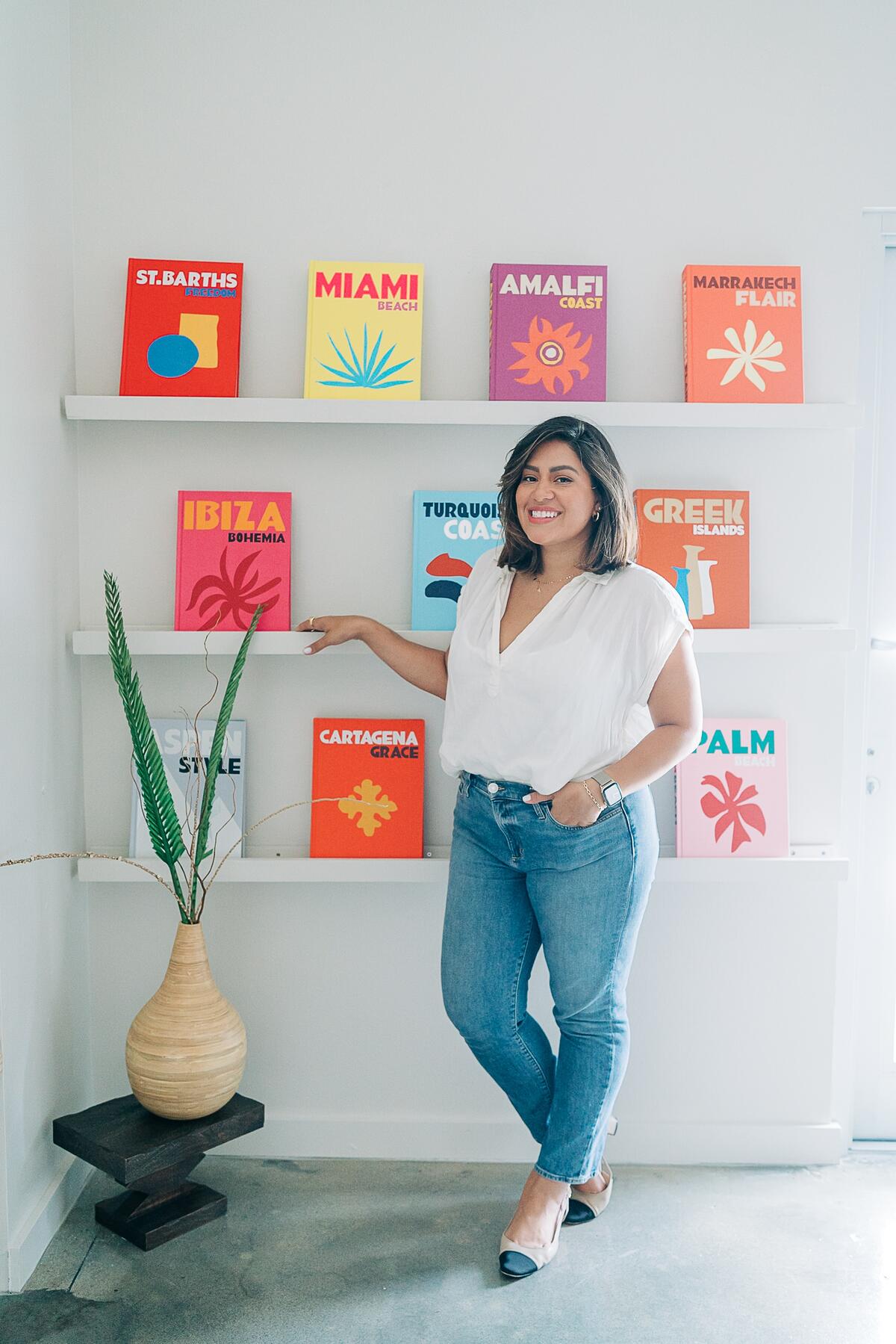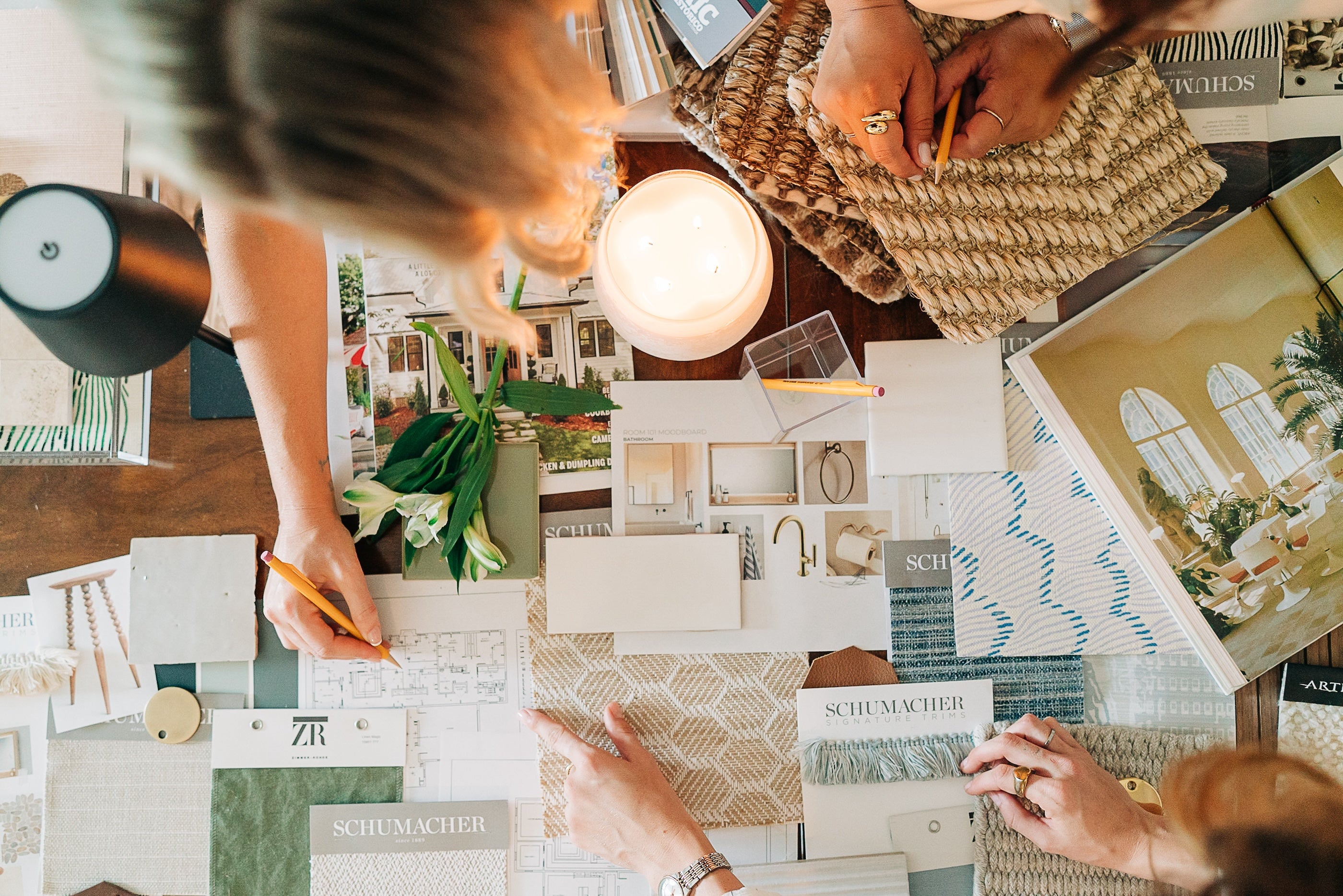When founder Dalia Soles launched Design Assisted in 2020, her goal was to offer an extra set of helping hands to designers, who already had a grasp on their creative vision and overall business but needed support when it came to planning and organization. It wasn’t until more recently that she noticed a new segment of design minds who were operating in a similar fashion: influencers.

Like many social media partnerships, the idea began in the DMs. It was 2022, and Soles watched from Instagram Stories as Katie Sturino, an influencer and founder of body-care company Mega Babe, began posting about her newly purchased condo in Palm Beach.
“For some reason I was awake at like 5 a.m., and she was posting about her condo, and I was like, ‘Hey, if you need any help, feel free to reach out,’” says Soles. “She was like, ‘I need help—please help me.’”
Much like the designers Soles’s Florida-based team works with, Sturino already had a vision for the space, along with plans for sourcing, as she’d already partnered with a few brands to begin outfitting the condo. Together, the pair began brainstorming a bigger picture for the space, with Design Assisted signing on to aid with technical planning aspects like scale and proportion as well as project management on a paid consultation basis. “My team and I really just came in to project manage—which is what we do for interior designers, so it fit perfectly,” says Soles.
For Sturino, the feeling was mutual. “She made mood boards, she made layouts—I gave her feedback about what my vision was and then she helped me marry that with reality,” she says. Soles helped bring the wilder aspects of Sturino’s design to life—including a hot pink sofa and ceiling wallpaper—and continued to provide styling support as Sturino readied the space for its debut on social media and a feature in Domino.
“Talking about business is my love language,” says Soles. “So talking to them is really natural. They understand what I’m doing as a business, and I understand what they’re doing as a business, so it’s worked out pretty nicely.”
Within Design Assisted, the influencer-specific service is not one Soles plans to advertise—at least for now, she says. But the experience did expose an underserved client pool in an otherwise niche industry: Much like designers, influencers often have an artistic lens, connections to sourcing and a business venture of their own, which their projects have to play into.
Late last summer, Sturino connected Soles with New York–based influencer Mary Orton, who also needed help executing a design project on her newly purchased home in Wisconsin. Growing up, Orton had entertained ideas of becoming an architect and devoured shelter magazines as far back as she could remember. Much like Sturino, the big picture was there, but the technical project management skills—fabricating the installation of the fireplace mantel, for example—were the missing piece.
“I was bemoaning my struggle to Katie, and she said, ‘Wait a second, you don’t need an interior design firm because you’ve got the design part covered,’” says Orton. “What you need is the luxury project manager—you’ve got to meet my friend Dalia.”
For Orton, it wasn’t only project support that made Design Assisted the right fit for her project. As an influencer often tapped by brands to market their products, working through a traditional full-service design firm doesn't always make sense.
“Me plugging into a traditional interior design firm as a normal client presents challenges because they wouldn’t be able to make a markup,” says Orton, whose relationships directly with brands means she doesn’t need a designer to get trade access. “[In this case,] the brand doesn’t have to worry about how an interior designer or traditional sales representative–type situation might complicate things when they’re working with me on their marketing efforts.”
Design Assisted is particularly valuable in this case, Orton says, because the company provides a route to facilitating influencer-brand partnerships in an industry that has struggled to catch up to fashion and beauty when it comes to social media marketing. She speculates that some part of the gap involves logistical difficulty: Design brands looking to send influencers product have the additional hurdles of finding local workrooms and installation methods and suppliers, whereas fashion and beauty brands can simply send a package. Services like Design Assisted, however, could step in to make those processes easier.
Plus, adapting to influencer marketing may become even more essential for brands if consumers’ online habits continue to weigh more heavily on the industry. While it’s true that trade brands in particular are targeting a more specific audience, both Orton and Soles point out that the next generation of design clients is sure to continue becoming more brand-aware than those who came before them. Following an explosion of new home decor and renovation accounts on social media during the pandemic, the next step to harnessing that consumer interest is aligning more closely with the influencers bringing that inspiration to life.
“How is the industry adapting to that democratization of content, and specifically of access to product, in an industry that is so uniquely otherwise only available to the trade?” says Orton. “I think that interiors brands still don’t quite know how to harness influencers, and they’re very behind in the influencer space across the board.”
They may not be designers, but the tastemaker status of content creators does influence consumers’ design decisions. For Soles, it’s a strong sign that influencers’ selling power—which often hinges on their home projects in the design sphere—will only increase in the years ahead.
“The future of the interior design industry is going to be online,” says Soles. “If we don’t evolve and start working with influencers, especially for marketing and brand deals, we’re going to be missing out as an industry.”





























